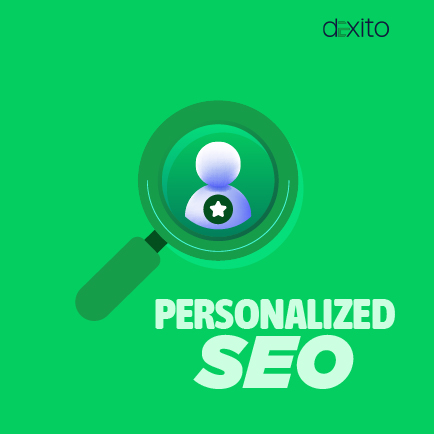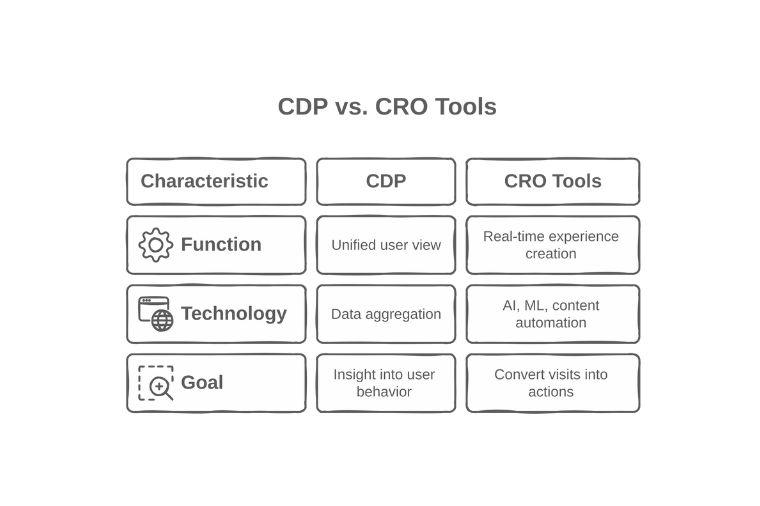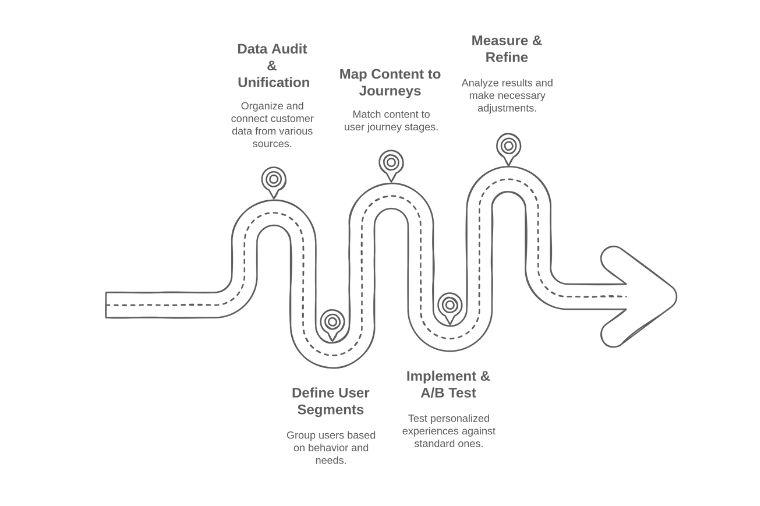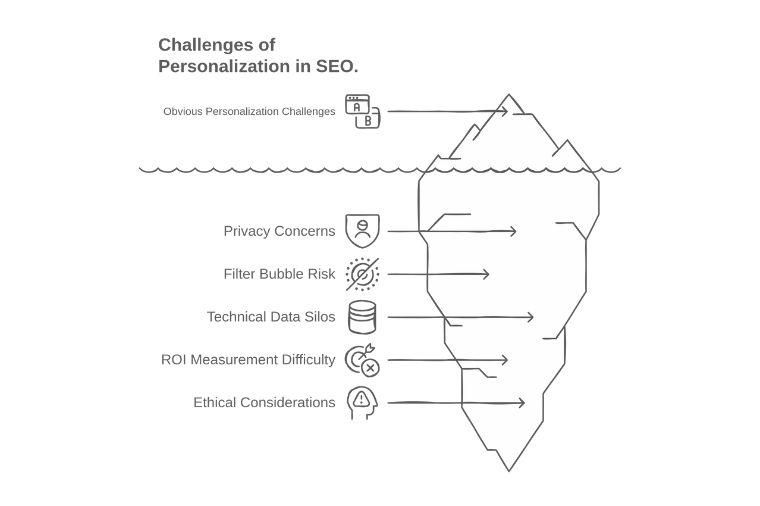Search That Speaks to Each User: Personalized SEO for Real People

Have you ever Googled something, and it seemed like the search results were on to you? It could be a blog post, answering your question before you even complete typing, or a product suggestion that appeared like it was created to your personal specifications. That instinct is not by chance. It is the consequence of a subtle transformation that is silently altering how search is conducted.
Long ago, SEO was just about getting the right keywords and piling up links. However, the situation has changed. Search is now more intelligent and human. It’s not just about showing up, but showing up in the right way, for the right person, at the right moment. And that is where the personalization fits in. Smartest SEO tactics today are people-centric. They take into consideration what a person has searched for in the past, his/her location and what they may require next. Search is no longer just about answers. It is all about knowing the individual asking the question. And here’s the thing. This is what people expect. Studies indicate that 71 percent of the clients expect businesses to interact with them in a personal manner. Moreover, 76 percent become frustrated when they fail to get them. That is a great indication that the traditional approach to SEO is simply no longer sufficient. An SEO Company in Kerala that focuses on personalization can deliver exactly what modern users demand.
In this blog, we will learn what personalized SEO is, and why it is becoming increasingly more important than ever. We will go deeper into its mechanism, resources that facilitate it, the process to get it launched and the obstacles you must be prepared to deal with.
Why Personalization in SEO is Non-Negotiable
Given the insights we’ve explored on the shift toward more personalized search, it’s evident that this isn’t merely a fleeting trend. Personalization has now become a critical component of SEO.
Picture the old search days. Anyone typing in the same query would see the same results, no matter who they were or what they needed. That doesn’t cut it anymore. Users today expect search experiences tailored to their specific needs and interests. Search engines along with this change are evolving. Updates like MUM and BERT by Google are the way toward understanding meaning and context. This no longer concerns just matching words but is oriented to responding to what someone is exactly looking for. Failure to consider this change is expensive. Lack of personalization leads to abandonment in the short term and low conversion probability. With time, this results in a decrease in revenue and loss of connection with your audience. Conversely, the firms that invest in personalization experience actual returns. The pace setters earn up to 40 percent more. On average, a 19 percent sales rise is experienced by the B2B marketers who personalize web experiences.
Netflix is a great example of how this works. Its recommendation system is behind 80 percent of what users choose to watch. This is because the platform closely follows behavior and patterns. The same logic applies to websites and product searches. The likelihood of conversion increases when the content or offers are influenced by what has previously appealed to a user.
The Four Pillars
Until now, we have discovered why personalization has become mandatory in SEO. We have observed the role it generates with regard to revenue, engagement and user experience in general. But how does it work in practice, though? In order to develop a strategy that feels genuinely personal, we must know the fundamental building blocks that facilitate it.
Consider personalization in the context of SEO as something you can take apart and put back together. It is not a single big idea that resides in the background. It consists of transparent, takeable components that integrate to constitute more pertinent experience. And when these bits are utilized effectively, they can assist in converting fleeting visits into enduring relationships.

1. User Intent
The first bit of this puzzle is user intent. In fact, one should not be limited to what someone searches; why they are searching should also matter. Are they searching for just information? Wanting a specific site? Comparing the options before finally deciding to buy them? Or are they ready to decide at this very moment? Understanding this much can change the entire structuring of content. For example, a consumer using the research phase may want a good, helpful guide, whereas a consumer closer to a purchase might ask for a result comparison or price page. When your content matches that intent with the user, it builds trust and moves people forward.
2. Behavioral Signals
Then there is the behavior factor. Every action tells a different story: from clicking to time spent on-page to revisiting old content. All of these signals can help understand what the users may need next. If someone has already downloaded a beginner guide, chances are that they may be ready for advanced resources. Personalizing content and suggestions based on behavior helps in creating a journey that appears well-thought-out in design.
3. Geographic Context
Then comes the location. Where people search from often determines what they will search for. A person from New York will probably need different information than one from India, even if both types have the same keywords. In fact, geographical location could be a determinant on things like language, pricing, service availability, or even cultural context. Location-based searches have exploded recently, so this one level of personalization makes your content just feel more relevant right away.
4. Demographic Segmentation
Finally, we have demographics. In a B2B context, this becomes highly useful, as at least one of the user’s industry, job title, or company size can direct the delivery of much more contextual content. For instance, both a marketing executive and a product manager might be interested in your software, but for very different reasons. If your content speaks directly to their role, it stands out.
HubSpot is one of the best live examples of this! When a new visitor comes in, they probably see simple, introductory content. But if somebody comes back after downloading a guide, the experience changes. This returning user gets to see more advanced articles or custom calls to action. It feels like the site knows exactly where they are in their journey, and that personalization really helps push people down the funnel a lot faster.
Also Read : The Advantages and Disadvantages of SEO for Real Estate Businesses in Kerala
The Engine Room
After taking a look at the crucial elements of personalized SEO, we can now go behind the scenes to understand what makes it tick. Sure, understanding intent, behavior, location, and demographics are important, but unless one has the tools to work with them, the insights would remain on paper. This is the part where technology comes in actually turning the strategy into operation.

Customer Data Platforms (CDPs)
A Customer Data Platform, or CDP, is at the heart of it all. Imagine this as your command center. It brings together information from your website, mobile app, emails, and more and gives you one unified view of each user. Instead of dealing with data from separate locations, the CDP gives you all the data in one place, which helps in gaining insights into the behavior of your audience and determining what it is that they need.
Conversion Rate Optimization tools (CRO)
Once this groundwork is laid, Conversion Rate Optimization platform comes into play. These tools utilize the combined powers of artificial intelligence, machine learning, and smart content automation to create real-time experiences at an individual user level. They analyze the behavior patterns found, predict the subsequent next action that a particular consumer is most likely to undertake, and adjust site content instantaneously to get that visitor to take the next step. For example, if the visitor is looking at articles, it can recommend the best article; if they are looking at products, it can adjust the product list or show the most relevant message. The point is: CRO tools, convert visits into actions.
It may sound advanced, but this technology is fast becoming a modern marketing standard. The CDP market appears to be growing rapidly, being projected to grow to over USD 20 billion in a few years. And more than 80 percent of marketers are either already using or planning to use AI-driven tools to enhance their campaign performance.
An excellent example of this would be Booking.com. When a person searches for a hotel, the results are influenced by their previous search history, assumptions on how much they want to spend, and when they might intend to book it. It may flash a message like “Only two rooms left” since the system knows that urgency helps with decision-making. All of this is possible by a CDP working with a CRO tool that will update the content in real-time.
4. Roadmap to Personalized SEO
Now that we’ve looked at what technology in personalization is all about, you’ll likely be wondering how it can all come together. These earlier systems we’ve talked about are all strong, but they truly shine in terms of what they can give if applied following a properly thought-through strategy. This next bit is all about that plan. Simple five-step paths turn personalization from idea into execution.

Step 1: Data Audit & Unification:
It all starts with your data. Before anything else, take a step back to see where your customer information comes from. Whether it be from your website, CRM, or email platform, the data input must be organized and interconnected. A centralized system would give a holistic picture of the users. Otherwise, the platforms would not know whom to personalize for.
Step 2: Define Core User Segments:
At this point, once the data has been collected, learning about your audience is next. The most important thing is to avoid treating everybody the same. Start grouping/segmenting users based on the behavior they show and the needs they express. You don’t need dozens of profiles. Basic is fine. For example, one may just be browsing and gathering information. One may compare prices. And one may be very well acquainted with your brand and making a move. These users segmented on the basis of their behavior patterns assist the platform in customizing what each visitor sees without bombarding them with information.
Step 3: Map Content to Journeys:
Using the defined segments, you can now match the content to the different types of users. That’s when personalization will really start to feel real. Depending on where they are on their journey, what might each person want? A curious visitor might appreciate a helpful blog post; somebody deeper into the funnel may benefit greatly from a case study or comparison guide. Having mapped the pieces to the journey, the system can then take care of delivery.
Step 4: Implement & A/B Test:
Once setup is complete, it’s time to get things in motion. It’s wise to start small. Select one segment and personalize the experience for them. Then compare it to an off-the-shelf experience. Most systems facilitate a test-and-track-type setup, which is a wonderful learning experience in terms of what’s working and what needs more improvement consideration, without taking on big early risks. In fact, 60% of companies say A/B testing is one of the most crucial methodologies that help them enhance conversions.
Step 5: Measure & Refine:
Step five is about refinement. Watch the individuals in each group and what they do: manage to spend additional time on the page? Bounce less? Is the conversion rate going up? Tracking data in this way helps to understand what needs to be changed and also where to double-down. According to McKinsey, the organizations that have mapped carefully the customer journey report about a 15-to-20 percent increase in the satisfaction of the consumers and about a 10-to-15 percent increase in the conversion. That is indeed quite a meaningful boost just from putting a bit more intention into organizing the process.
This approach has actually found implementation both in theory and practice. PicPay, a Brazilian fintech, has also set using this framework. They monitored user behavior, grouped people into segments, and provided personalized product recommendations. After this simple test, the company saw a remarkable improvement in engagement.
Also Read : How Artificial Intelligence in SEO Is Transforming Digital Marketing in Kerala
5. Overcoming the Challenges of Personalization
So far, we have examined how personalized SEO is made into data, strategy, and the right tools. But like any approach, evolving the personalized SEO approach also has its challenges, all worthy of consideration.

1. The Privacy Paradox:
Privacy is a huge concern. Users want experiences relevant to them, but users are more cautious regarding how their data is used. This is called the privacy paradox. Transparency and respect have to go hand in hand. Adhering to rules like the GDPR and CCPA builds trust with the people. Research shows that 86 percent of the consumers worry about data privacy, and 40 percent say they do not trust companies in using their data ethically.
2. The Filter Bubble Risk:
An additional challenge is the filter bubble. Personalization that becomes too narrow limits what users actually see, diminishing their chances of discovering new products or ideas. Creating heterogeneity in content and recommendations helps counteract this effect and keeps the experience fresh and interesting.
3. Technical Hurdles:
Data silos are technically a major hindrance. In spite of powerful tools, information placed on multiple platforms can complicate creation of a comprehensive profile of the user. It is due to this fact that Customer Data Platforms become so important. Nevertheless, new technology is not sufficient. There should be a cross-functional organization with shared objectives of teams. Regardless of the increased number of personalization platforms, 47 percent of marketers cite data silos as the greatest obstacle.
Also Read : Top Off-Page SEO Techniques to Grow Your Business in Kerala
4. Measuring True ROI:
It is hard even to measure impact. Personalization occurs across time and touchpoints, making it difficult to assign successful outcomes to one specific touchpoint. Looking for those patterns that are widely observed across various segments gives more definitive insights. Following metrics such as conversion rate, Digital Marketing ROI, or engagement behavior over time will give a more lucid representation of what works.
Ethics need to be at the center of every personalization effort. A classic example of this is Target, which gathered data about its customers and figured out that their daughter was pregnant and started sending her printed promotions about childbearing before her family even knew. Thus, the backlash emphasized that thoughtful deployment is not only about what we can do with data but also about what we should be doing with it.
Conclusion
In today’s search landscape, personalized SEO has become a necessity. Moving to context-aware strategies for understanding rather than just using generic, keyword-driven tactics is a symptom of a larger shift in how users expect to be understood and served.Personalization is now driving true engagement, deeper loyalty, and measurable outcomes for businesses.
Moving forward, search will only get more predictive and personal. Companies that make the correct technology investment and apply a continual style towards listening and responding will acquire a sustainable advantage. By 2025, market leaders in personalization are likely to drive performance among rivals by 30 percent in essential marketing parameters. The opportunity to act is now.
dExito Branding is a leading Digital Marketing Agency in Kerala and a trusted Branding Agency in Kerala, helping businesses grow with expert SEO, social media, and creative brand-building strategies. Contact us today to boost your visibility.

Salmanul Faris, Founder of dExito Branding, is a seasoned Performance Marketing Expert with over 8 years of experience in Google Ads and Meta Ads. He specializes in helping businesses across India and the GCC achieve measurable growth through data-driven marketing strategies. Amidst his dynamic role at dExito, he shares insights on the latest trends in digital marketing and performance marketing, helping brands stay ahead in the competitive digital landscape